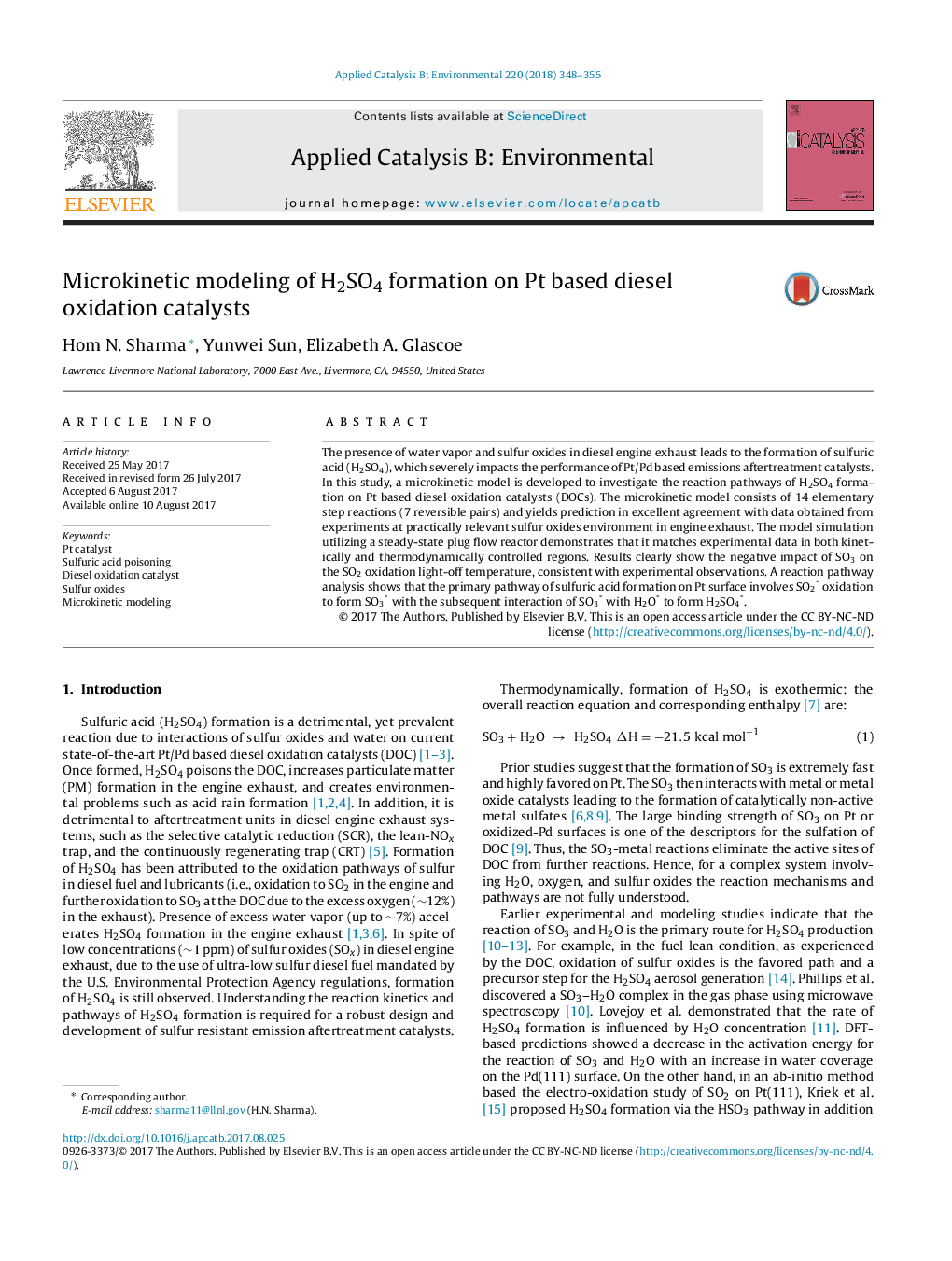| Article ID | Journal | Published Year | Pages | File Type |
|---|---|---|---|---|
| 6453612 | Applied Catalysis B: Environmental | 2018 | 8 Pages |
â¢Microkinetic model with 14 elementary step reactions is proposed for H2SO4 formation on Pt DOC.â¢Impact of SO3 concentration on DOC performance is evaluated in terms of SO2 conversion.â¢Two distinct pathways for H2SO4 formation are considered and one prominent pathway is shown to be relevant.
The presence of water vapor and sulfur oxides in diesel engine exhaust leads to the formation of sulfuric acid (H2SO4), which severely impacts the performance of Pt/Pd based emissions aftertreatment catalysts. In this study, a microkinetic model is developed to investigate the reaction pathways of H2SO4 formation on Pt based diesel oxidation catalysts (DOCs). The microkinetic model consists of 14 elementary step reactions (7 reversible pairs) and yields prediction in excellent agreement with data obtained from experiments at practically relevant sulfur oxides environment in engine exhaust. The model simulation utilizing a steady-state plug flow reactor demonstrates that it matches experimental data in both kinetically and thermodynamically controlled regions. Results clearly show the negative impact of SO3 on the SO2 oxidation light-off temperature, consistent with experimental observations. A reaction pathway analysis shows that the primary pathway of sulfuric acid formation on Pt surface involves SO2* oxidation to form SO3* with the subsequent interaction of SO3* with H2O* to form H2SO4*.
Graphical abstractDownload high-res image (198KB)Download full-size image
